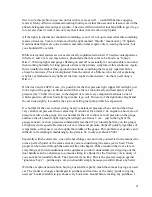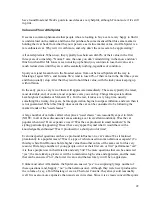
10
With the right set of parts suppliers, junk yards, and mechanical acumen, the Series 2 cars are
probably the best candidates for "project" status for a do-it-yourselfer.
However, there were some detail changes in the appearance of the Series 2 cars. In 1970
(Europe) and 1971 (everywhere) there was a distinctive
”
pinch
„
on the tip of the Spider
“
s nose,
just above the shield-like grille, carried over from Series 1. This apparently was deleted some
time around 1972 or 1973, making the nose of the Spider very smooth. Probably in 1973 an
elegant wooden steering wheel replaced the thin, black plastic wheel found in the 1750 Spiders,
and
”
turbina
„
style alloy wheels replaced the stamped steel items that previously equipped all
earlier Spiders. The license plate lights were moved from the surface of the rear bumper to the
rear valance panel after 1972. Finally, in the 1973 and 1974 model years, increasing bumper
requirements forced a small but significant change in the front and rear bumpers of US cars.
Because of this, the bumpers of a 1973-1974 Spider are probably some of the hardest to find (and
hence most valuable) parts of any Spider in any year.
Series 2a
This will mainly concern US owners, since the Series 2 cars continued essentially unchanged
(with Weber carburetors) until 1981 in the rest of the world.
After 1974 the US government really let the hammer down on the car industry in general. Safety
requirements were "improved" by the addition of a 5-mph bumper requirement, and emissions
tightened to the point that even Alfa had to add a catalyst and learn to live with low-octane
gasoline.
The Series 2a cars are distinguished externally by the large, prominent black rubber (baby buggy)
bumpers. It would seem that Alfa, like just about every other European manufacturer except for
Porsche, had had it with Congress, who created all these noisome regulations, and NHTSA, the
US regulating body responsible for enforcing them. The 5-mph bumpers seem to have almost
universally (and probably rightly) been seen in Europe as a sop to the powerful US insurance
lobby. While the integration of these new "safety" laws by Alfa was better than, say, MG, it still
was nothing like the effort that Porsche went through with the 911 in 1975. In what would
become a depressingly common event in the US Alfisti's life, the Germans beat Alfa to the
punch. The increased safety requirements would eventually add over 300 lbs to the car.
Because California emissions required a catalyst earlier than the rest of the country, in 1975 and
1976 Alfa Romeo imported only
”
49 state
„
automobiles
i.e. for sale everywhere except in
California. Because California continues to have the most restrictive emissions inspections in the
entire country (by a long shot), it
“
s doubtful if even today owners can bring cars from these two
years into that state and get them licensed without substantial fees being imposed. If you live in
California and are considering this, please be sure to check with your local motor vehicle
department before you purchase the car.

























